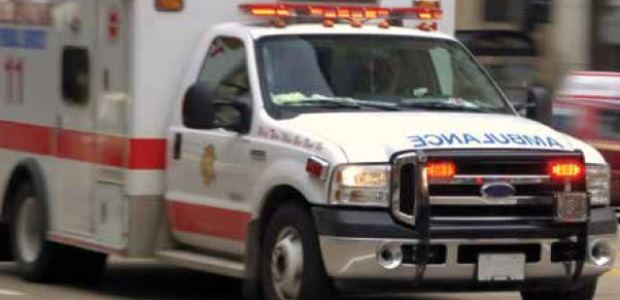
HHS Tests Moving Highly Infectious Patients
Seven people acting as patients with Ebola symptoms, including one pediatric patient, were to present themselves at health facilities in Texas, South Carolina, Oklahoma, or Idaho. Health care workers were to collect collect and ship samples for diagnostic tests to state laboratories and have the patients transported by air or ground ambulance to designated Regional Ebola Treatment Centers.
The U.S. Department of Health and Human Services this week carried out what it described as the largest patient movement exercise in its history -- a test of the nationwide ability to move patients with highly infectious diseases safely and securely to regional treatment centers. Seven people acting as patients with Ebola symptoms, including one pediatric patient, were to present themselves at one of these health facilities: CHI St. Luke's Health-The Woodlands Hospital in The Woodlands, Texas; Medical University of South Carolina in Charleston, S.C.; Norman Regional Hospital in Norman, Okla.; St. Alphonsus Regional Medical Center in Boise, Idaho; and St. Luke's Regional Medical Center in Boise.
At each facility, health care workers were to collect collect and ship samples for diagnostic tests to state laboratories, which would then practice conducting the necessary lab tests to diagnose the patients with Ebola, triggering the use of appropriate isolation techniques and PPE by personnel, who then would have the adult patients transported by air to designated Regional Ebola Treatment Centers. They were to be placed into mobile biocontainment units for the flights. The pediatric patient was to be placed into protective equipment and transported by ground ambulance.
"Saving lives during crises requires preparation and training," said HHS Assistant Secretary for Preparedness and Response Dr. Robert Kadlec, M.D. "A tremendous amount of coordination, synchronization, and skill is needed to move patients with highly infectious diseases safely. We have to protect the patients and the health care workers caring for those patients. This type of exercise helps ensure that everyone involved is ready for that level of complexity."
Coordinated by the HHS Office of the Assistant Secretary for Preparedness and Response, the exercise involved more than 50 organizations, including the Department of State, Department of Transportation, the regional treatment centers, local and state health and emergency management agencies, hospitals, airport authorities, and non-government organizations.
The treatment centers are Cedars-Sinai Medical Center in Los Angeles; Emory University Hospital in Atlanta; Providence Sacred Heart Medical Center in Spokane, Wash.; and University of Texas Medical Branch in Galveston, Texas. The pediatric patient was to be transported to Texas Children's Hospital West Campus in Houston. Participating airports are Boise Airport; Charleston International Airport in Charleston, S.C.; DeKalb-Peachtree Airport in Atlanta; Ellington Field Airport in Houston; Los Angeles International Airport; Spokane International Airport; and Will Rogers World Airport in Oklahoma City.
The test was to run through April 12. Participants will gather April 13 to assess it, compare actions across the country, and share best practices.